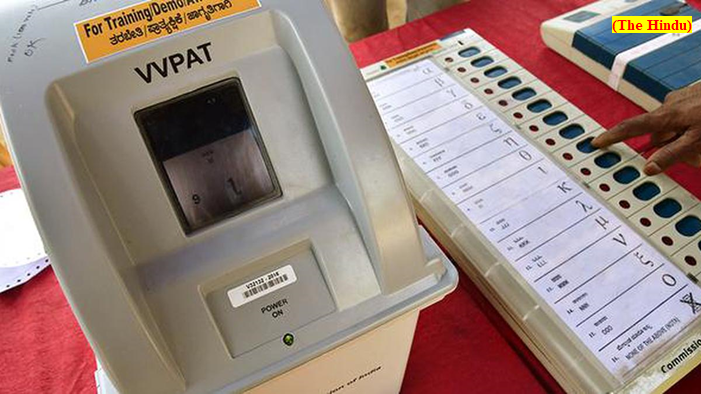Will migrants be able to vote remotely? (GS Paper 2, Governance)

Why in news?
- The Election Commission of India (ECI) said that it was ready to pilot remote voting for domestic migrants through newly devised remote electronic voting machines (RVMs) so that the voter does not have to travel to their home State or district to cast their vote.
- The EC will demonstrate an RVM prototype to political parties on January 16, and has asked for their suggestions by January 31.
How significant is the migrant vote?
- The EC has admitted that the absence of a central database for migrants poses a problem on the issue of remote voting. However, the EC recognises that “migration-based disenfranchisement is indeed not an option in the age of technological advancement.”
- As per the 2011 census, 45.36 crore Indians (37% of the population) were internal migrants, settled in a place different from that of their registered residence.
- Expressing concerns about a stagnating electoral participation, the EC says that while 67.4% of the eligible 91.2 crore Indians voted in the 2019 Lok Sabha election, about one-third or close to 30 crore voters did not cast their vote.
- Inability to vote due to internal migration (domestic migrants) is one of the prominent reasons to be addressed to improve voter turnout and ensure participative elections.
What is the EC’s proposal for RVMs?
- In its 2015 order on a plea seeking voting opportunities for domestic migrants, the Supreme Court directed the EC to explore remote voting options.
- A committee of the poll panel had considered remote voting options such as proxy voting, postal ballots, Internet voting, and early voting but did not recommend any of these methods citing various reasons. The EC has now come up with a prototype for a Multi-Constituency Remote Electronic Voting Machine (RVM) for migrant voting, a modified version of the existing EVM model.
- The EC says the RVM can handle multiple constituencies (up to 72) from a single remote polling booth. The voter will have to register (online/offline) for a remote voting facility within a pre-notified time with the concerned Returning Officer (RO) of their home constituency.
- Once the voter is verified and marked eligible for remote voting, a multi-constituency remote polling station will be set up in the area of their current residence.
- The RVMs will have the same security system and voting experience as the EVM, with the modification of an electronic ballot display with candidates and symbols instead of a fixed ballot paper sheet.
- When the voter scans his/her constituency card in the presence of the Presiding Officer at the station, their respective constituency and candidate list will appear on the RVM display. As for counting the votes, the electronic system will also count and store the votes for each candidate in a constituency.
What are the hurdles?
- Multiple Opposition parties have already expressed their concerns. The use of the proposed remote voting mechanism could “seriously undermine the trust in the electoral system,” urging the EC to first restore it through “transparency and via honest engagement with the Opposition’s concerns.”
- The EC itself has mentioned some procedural challenges that it is seeking stakeholder suggestions on, like how to define a migrant voter with respect to retaining registration at the original place, whether they are staying away for a longer duration at their “ordinary residence” and or are temporarily absent.
- Other issues include that of placing remote voting in the electoral concept of territorial constituencies or demarcated areas in States for equal representation of voters. Other issues include the implementation of the Model Code of Conduct (MCC) in remote areas, ensuring secrecy of voting and appointing polling agents at remote voting booths.
What next?
- The idea is to implement RVMs as a pilot project in the upcoming Assembly elections in nine States in 2023, and if successful, it could be fully implemented in the 2024 general elections.
- However, upcoming deliberations with parties and the possibility of amending election laws will determine if remote voting for migrants will materialise.


